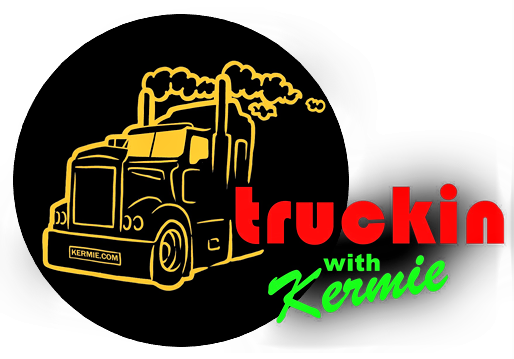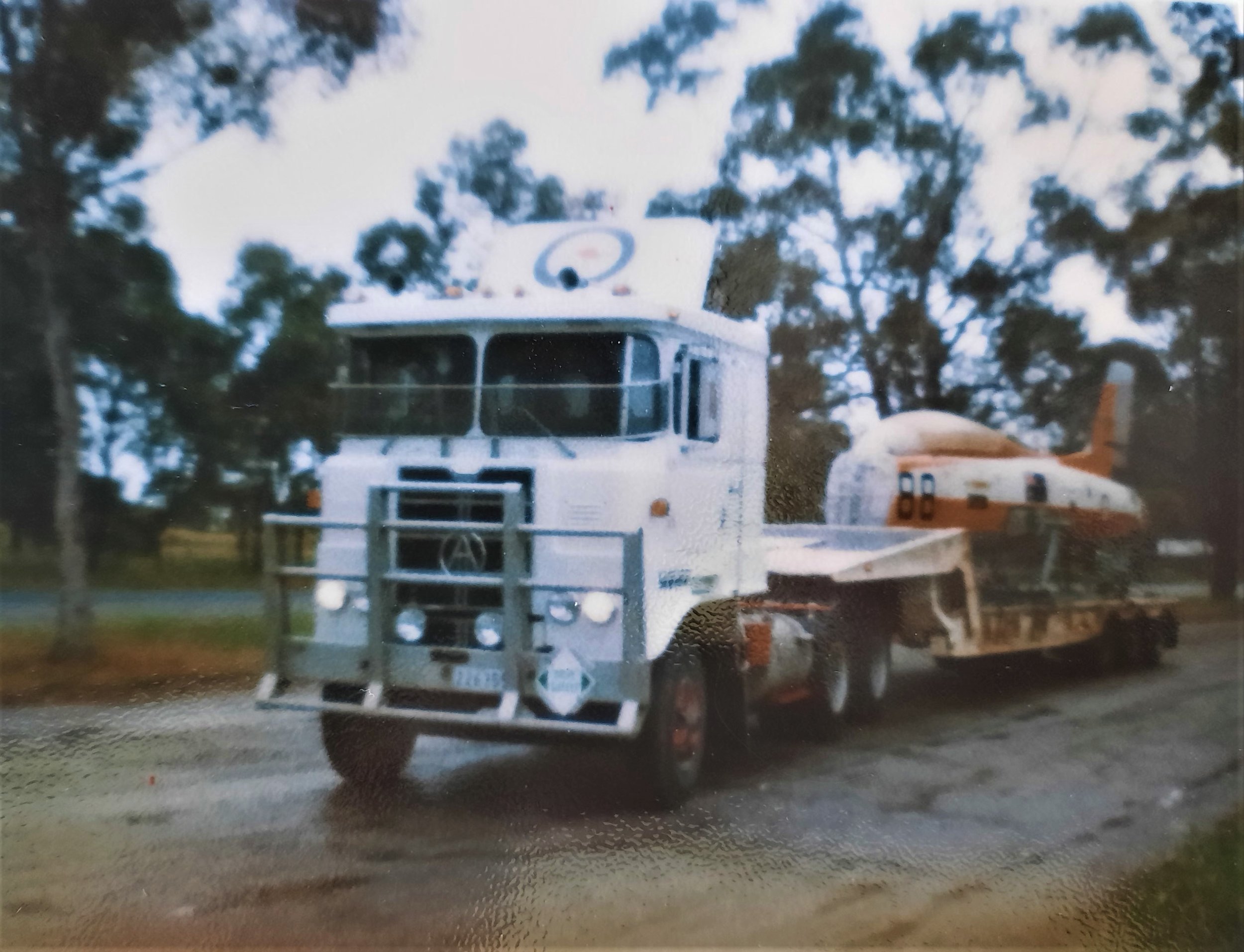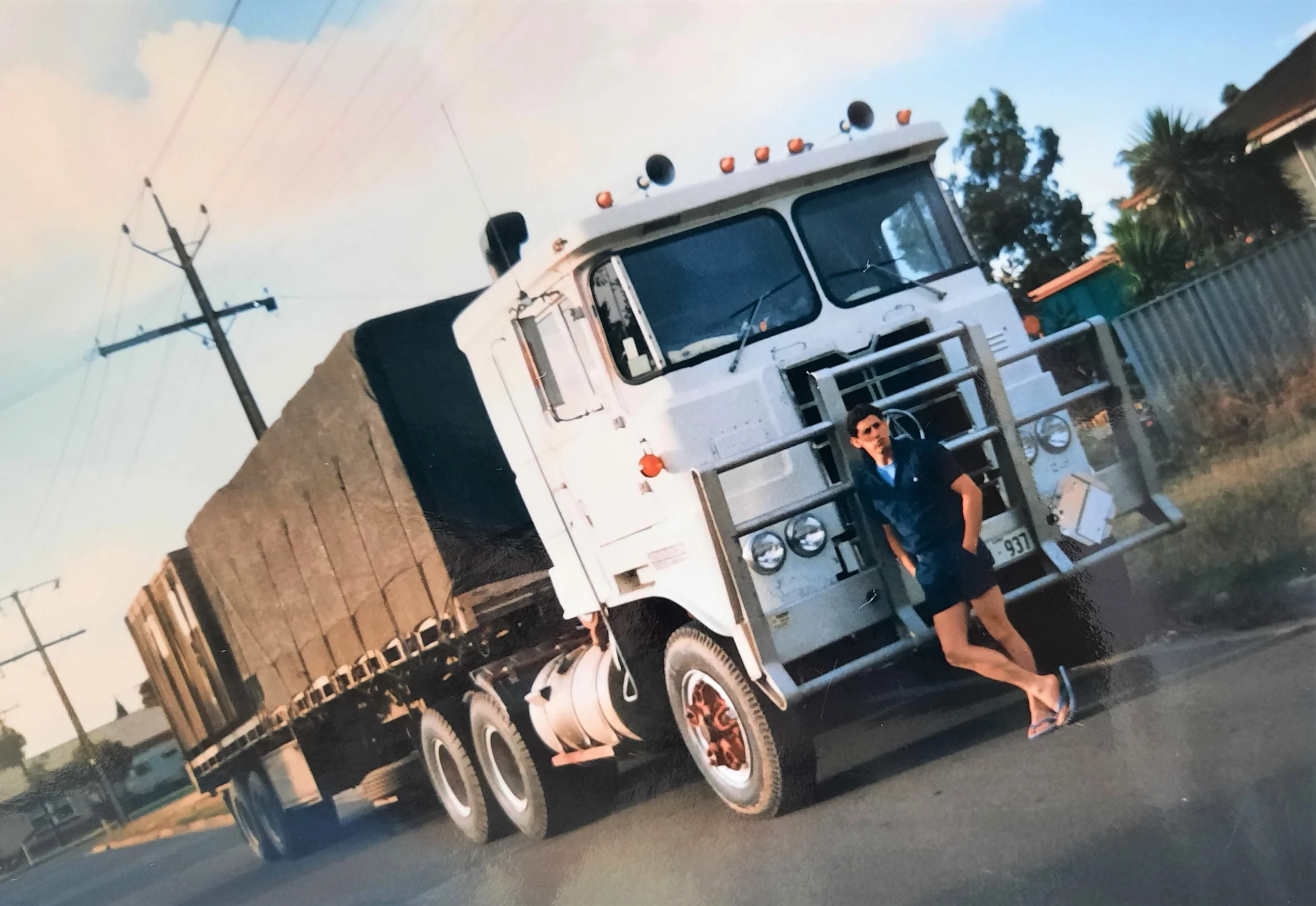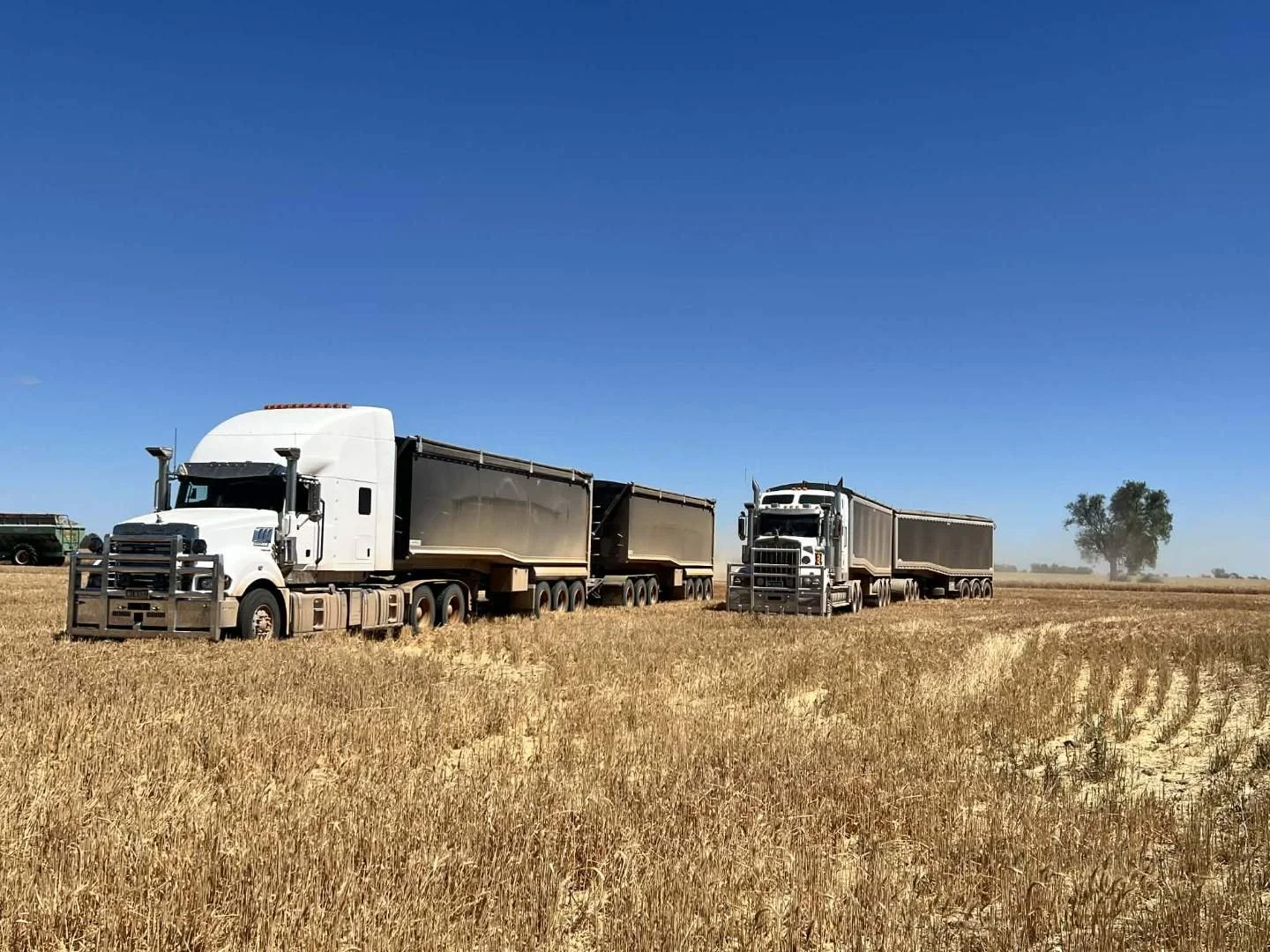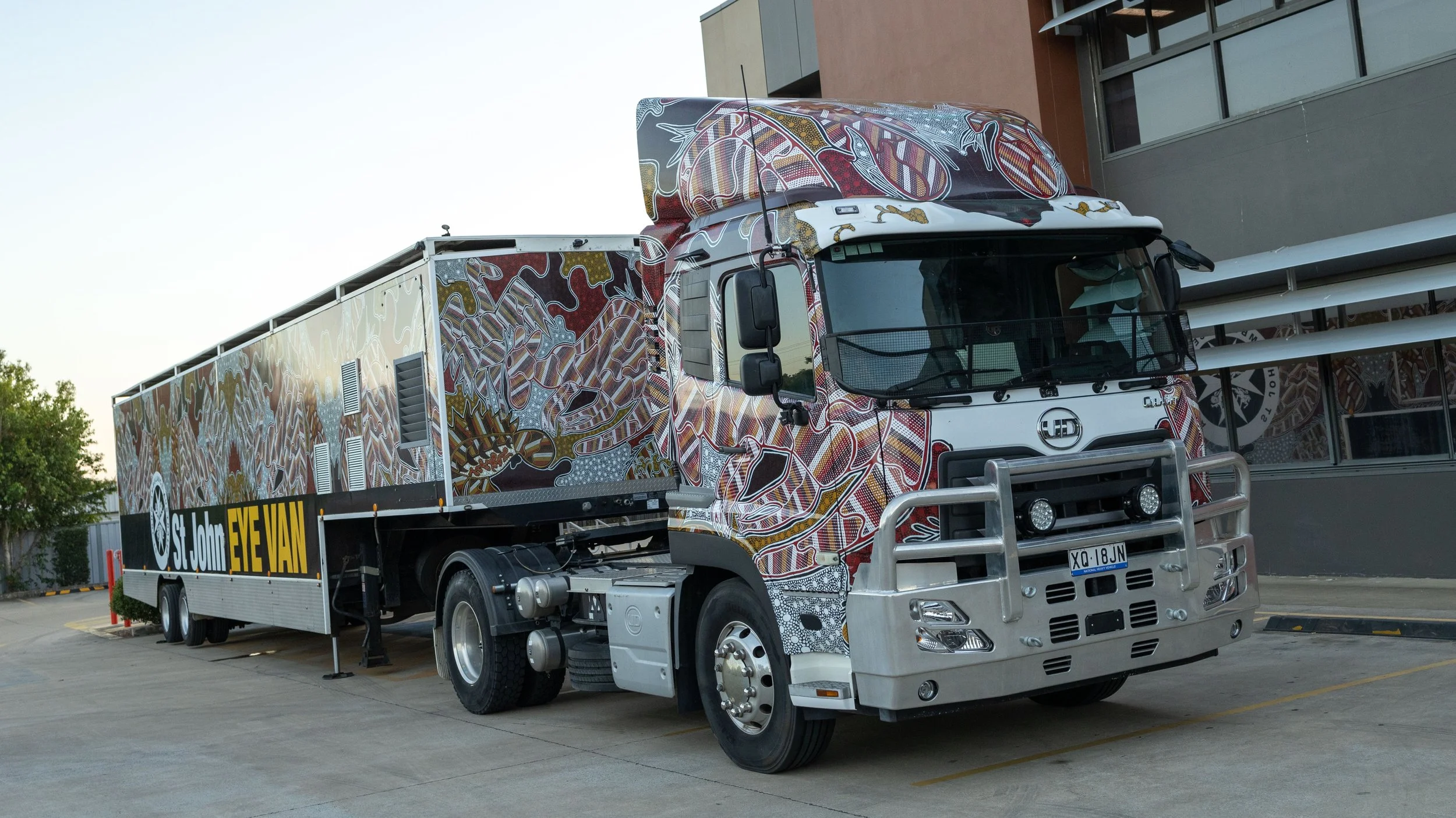Martyn Davies: The Long Road to the SAR
The RAAF flies, the Navy sails. So why would they have trucks? That’s what the Army said. “We are the land-based force, therefore we’ll do the driving.”
So they did for a time, although in the case of Martyn Davies who was in the RAAF, the Army borrowed him for a couple of years (still in RAAF uniform) to drive those Army trucks. Guess the proudly land-based mob who prided themselves on being able to cross any terrain was short on drivers.
This is a story of trucks and buses, of government duplication, and one Martyn Davies.
At 63 years of age, Martyn has led a varied life, most of it behind a wheel of some sort. By his own admission, he wasn’t very good at school and at 16 gave it away to undertake an apprenticeship in carpet laying, following in his father’s footsteps.
By the time he finished his apprenticeship Martyn was well over his chosen profession. “I knew that it wasn’t for me, but completed the apprenticeship. Then I came across an ad from the RAAF. They were looking for truck drivers – training included. How hard could that be? I was 20 and it was 1978 when I joined, and the association continued for the next 23 years.
“It was fantastic! I had a ball and lived in every Australian State bar WA. I never went overseas which was probably a good thing because it meant I was between wars. There was Timor at the time but I was a heavy transport driver so they didn’t need me over there.”
Dodge D2F
“In those days the RAAF moved their own freight and had their own trucks. When I came on board they had Leyland’s and Dodge D2F’s. (Martin is showing his age here). Then came 3800 Atkinson’s which were a great truck. From there we progressed to 4800 Atkinson’s. I think we tended to look to the local builders. Being military they liked to buy Australian where they could. International had a couple of ups and downs and weren’t travelling well so we started buying Kenworth, Mack and a mixed fleet.”
If the plane can’t fly….
“I must admit that the RAAF didn’t do things well – on the ground at least. We had Storage Depots (SD’s) in Melbourne Sydney and Brisbane. Melbourne, for example had nearly all the uniforms and consumables. Say Perth wanted product, they would send a telex to Melbourne ordering 100 garbage bins, 30 boxes of loo paper, soap, etc. We’d load up in Melbourne and I’d drive the Nullarbor, deliver and drive back east empty. It wasn’t the best illustration of Time & Motion excellence.
“I went over there once with 100 garbage bins. True story! We would buy them by the thousand from Willow manufacturing and store them in Melbourne. If Sydney needed some we would send 100 there, we would send another hundred to Perth, another hundred to wherever. It was rather bizarre to say the least.
Rack ‘em, stack ‘em and deliver ‘em
“This was in the ‘80’s. That said I loved it. The comradeship was brilliant. Everybody helped everyone else out. We had trucks going to Brisbane, Sydney and Perth every fortnight. If something had to go to Darwin we would send it to Sydney and they would on-forward from there. It was a great life though.
“In 1996 the Army got involved. The Airforce is driving trucks, the Navy is driving trucks. ‘WE ARE THE TRUCKS! WE.ARE.THE.ARMY!’ So the Army took on the role but funnily enough they took me as well – Air Force uniform and all. For two years I drove an Army truck in AF uniform. That got a few looks from a confused public.”
“That put me behind the wheel of an F12 Volvo. They had leased a fleet of those. I would cart a lot of aircraft parts, lots of wheels, for instance tyres for Hercules. Aircraft tyres have to be stood up. You can’t a strap them too strongly because the walls, if you lay them on a pallet the wall of the tire will rub on the pallet and will fatigue the tire walls which are super sensitive.”
“We would put a wall of corflute cardboard inside the gates and then we would roll in the tyres and jam them together to stop any movement. They have a lot of give in them so that when they hit they squash and bounce back up. If you strap them to a pallet and put a band strap on them you’re going to do harm to them. They are that sensitive.
“There were certain loads that we carried that were specialised so we went across to Perth and showed them how to do our loads. At the same time I had never carted an APC – armoured personnel carrier – which weigh around 10 ton. You’d see them with track wheels in the early days. Today we have Bush Masters made at Benalla and Bendigo. So we would go and pick up an APC and learn how to chain it down. We were imparting information to each other all the time.”
“That went for a couple of years and then the Army lost their trucks. It was outsourced – initially to Linfox I think. The Army felt that their core business was shooting people.
“I was in the military for 23 years and couldn’t shoot the side of a barn if I was standing inside it. Probably once every five years we would have to go down to the armoury, get an SLR rifle and take some pot shots at a bit of dirt fixed to a target. I don’t think I ever shot the target.
“So yeah, the mustering dispersed and I spent the last four or five years back at the AF as an instructor teaching people to drive trucks. They still needed people to drive trucks, just not interstate.”
Kalari insisted on neatness. Martyn obliges
“While in the Air Force I did some part-time work for Kalari, The most professional transport company I’ve ever had the pleasure to come across. They are those orange and yellow bulk tankers for those not in the know. I walked in there as a bulk tanker driver and worked for them Saturday’s and Sunday’s for nearly 10 years. Walking the yard and we all wore a chambray shirt. You didn’t know if you were talking to the cleaner, the man who looked after the toilets or a B double driver. Tony Noske the boss wore the same.
“Tony had worked for a transport company in America for a couple of years. He said the trucks were bright green. No one knew the company - they just said, ‘There’s one of those green trucks, there’s a lot of them around’. When he came back he wanted a theme which was safety. He didn’t believe in bull bars because he felt that it may have made the drivers tend to be bullies. No extra lights on the truck, bumper bars were plastic instead of bars. Everybody wore those chambray blue shirts. When people went to the smoko room, the ladies in the office, the mechanics, the drivers and the cleaners all used the same room.
“The boss never had to put up a ‘Don’t Swear’ sign in that room. The mechanics would take their overalls off and would all walk around in their socks in there. It was a place of equality long before equality was a thing. Every fortnight Tony would get there early in the morning - like at 4AM - and he would cook a barbecue for all the staff. And he was the owner of the company.
“What a fantastic company, great to work for. We had 16-year-olds walking around cleaning trucks and when one had to be backed under a silo or a hopper or had to be backed into a shed, the apprentice would do that under supervision. They would drive around the yard to the loading docks. They would be loading the trucks learning how to strap, learning how to use a pop tanker or a tipper. They would go into the workshop and they would be shown how to do adjust a spring break. It was an apprenticeship in every sense of the word. When the time came they would go out with the drivers and learn the craft. Then they got medium rigid licenses, heavies and so forth, all the way through.”
“He eventually sold out to the British Swire Group. He said to me one day, ‘I’ve got 50 trucks and I’ve got 50 blue-ribbon customers. To fulfil all my contracts I really need 100 trucks. I made more money with 30 trucks that I do with 50. Unless I go to 100 I need to scale back. It’s okay at 50 but I’m not prepared to go that next step. So he put it on a public float and the Swire Group bought it. They were Frigmobile, they own Cathay Pacific, they own tugs, Coca-Cola franchises in Hong Kong, a Volvo franchise in Hong Kong - they are huge. British.
“So Tony got out of that to focus on his son who was into V-8’s. He and John Bower had some Ferraris, I believe it was Prancing Horse Racing. He built a couple of race transporters and supported his son in the V-8’s. Mark Noske, his son and Bower used to race the Ferraris but unfortunately never reached that level or pinnacle of success. That is only the elite of the elite. But hey, a lot of fun.
“In 2003 I left and went to a Tafe College and continued doing the same thing as a driving instructor in civvy land. We used to do defensive driver training. I even worked at Odyssey House drug rehab. That opened my eyes up to the drug world. I honestly thought they were just druggies off the street. In fact there were many who were doctors, and ambos and nurses and dentists who had taken too much Mogadon or Valium or whatever to get through night shifts or combat the stress and PTSD.
“The courts would take their driving licenses so they would go to Odyssey House. My job was tick them off to say they were safe and ready to drive again. In turn they could drive to the shops, chemists – well maybe not chemists - et cetera. It would give them a bit of a life back.”
“Then I drove for BP in a Mack Superliner, hauling the V8 Supercars around for two years - the perfect job for an alcoholic who is unmarried and who has no life, because you are constantly away. In 18 months I think I was home for three weekends. BP was a major sponsor of Ford Performance Racing. We had a B double with promotional cars in it. They would be put on the ground at the back of the pits and Mark Winterbottom and Stephen Richards, who were the two drivers back then, would sign autographs and the like for the fans. They were good blokes and it was good PR.
“Eventually I decided to give it away. Family was missing out on me, and me them. BP’s parting gift to me were business class flights for the family to the Gold Coast, passes to all the Worlds and a 14th floor apartment on The Spit. They gave me a BP credit card and all food, hire cars, etc was on them. Didn’t put my hand on the wallet once. It’s nice that there is a big business out there who actually cares not about what you do but also about what you have done.
“From there I worked for Nattessess Driving School. Based at Maryborough they had people working all over. We were all contractors and got paid as such. I tended to do a lot inland.
“To get a B double when I started out, you had to have at least 12 months experience driving a semi and it had to be documented with a logbook. You had to earn that license. Over time they have made it easier and easier so today – this is Vic roads, not the driving schools who you can’t blame - you can get a semitrailer license and you can go back tomorrow and get a B double license with no experience whatsoever. This is the regulatory authority that has done this. It is just wrong. Everybody’s going crook at the driving schools but they’re not making the rules. It’s ridiculous.”
Glory days
“We’ve created a monster in that they are just giving licenses away and we have a lot of people coming in from other countries now, lovely people and they have to put food on the table and have mortgages and children so you can’t blame them. You have to blame the system. The problem is these blokes come in, get a semi licence, thinking they can get a job driving a container truck down the wharf. But there’s not much work for semis any more - everything is B double or bigger. So that semi licence they got yesterday aint working for them so tomorrow they get a B double and the next day they’ve got the job.
“We’re talking a B double, which instead of $1 million worth of cargo has $2 million. I’m not picking on any particular group. The Australians have just as many crashes as other nationalities. As a case in point, even the Indian boys I talk to laugh and say, ‘Gee, you should drive around Mumbai or Punjab. It’s civilised here by comparison’. Unfortunately they’re the ones willing to do the work to put food on their tables and bear the brunt of covert and overt racism. Like I said I’ve seen plenty of locals who are worse.”
Martyn on the right
Martyn has spent the last ten years working as Training Manager for (Singapore based) bus company, CDC, the biggest bus company, “and probably the largest land-based transport company” in the world. CDC has trains, planes, chauffeur cars, taxis – they are into everything. They have nearly all the buses in the UK and Ireland, China, everywhere, except here in Australia where they rank third after Ventura (Australian owned) and Trans-Dev (France).
That third position may well change with the company aggressively on the acquisition trail. “We just bought a company in Darwin called Bus Link who do all local, and we’ve inherited about 14 bus depots through the Gold Coast, Sunshine Coast, Mildura, Warrnambool, Wentworth and Broken Hill. There’s plenty of opportunities to transfer. I reckon my next one might be Gladstone. I like it up there.”
If you thought a Prime Mover was expensive, cop these figures: “Our very old buses would use about 200 litres of fuel per day. Today a modern bus is worth $460,000 not registered. They will use 120 litres of fuel daily. We have just gone and bought 50 hybrid buses. They are $650,000 each but will use only 25 litres of fuel for the day. We’re going to get the money back.”
How much truck could you buy for $650,000?
“If you come into the bus industry you probably don’t have any experience. We teach you how to drive a bus, we do a lot of customer service teaching - learning how to turn the other cheek. People are probably ruder than they were in the past. The general public just treat you like a commodity these days.
“The money is good – better than trucks. We get the men and women, train them up, and teach them all of the etiquette. Buses now deal a lot with people with disabilities. With that we have to provide training to the drivers obviously. We do get quite a few truckies who are tired of the long hauls and want to get home at night. So with them it’s more concentration on the public interaction.”
Martyn has recently stepped back from the Training Manager’s role and dropped to 3 days per week. This is giving him more time to indulge in his passion, a 1986 Kenworth SAR.
“Some people like caravans, people buy hot rods, different types of cars and motorbikes. I’ve driven trucks for most of my career - or coaches or buses, so for me it was a no-brainer. I was looking for an old truck to do up. I had an old C3 Corvette for 15 or 20 years. It was a great car but I didn’t take it anywhere. It sat in the garage.
“So this 1986 SAR Kenworth with a 400Hp CAT popped up on Facebook. Disappointingly, the 20 speed Spicer in it failed in between looking at it and buying it so they put in the 18 speed Road Ranger (which is still a cool box to have).
“It’s a fairly long chassis with four tanks. It takes 1600 litres, or $2½ thousand dollars to fill it up. I haven’t filled it up once in case my wife finds out. I usually put $400 in every now and then which is a bit easier on the wallet. Every time I use my credit card it comes up on Sandra’s as well, so she knows when I’ve popped in for a packet of hot chips somewhere. I don’t think $2½ Grand would go down too well.”
Martyn’s SAR is one of the last of that period and features in this year’s Kenworth Calendar. “She is Miss October, but I’ve named it ‘Autonomous’ because when I got it the lights would work until I went out in the dark and then they wouldn’t. It’s the same with other components in that they’ve a life of their own seemingly. The beauty is that Kenworth can always supply a replacement part. Tino over there is an absolute ripper of a bloke.
“He will go through, find the part number and get it for you. This for a 30 year old truck. You don’t ask how, you just accept it. They’ll miss him when he retires. If you want to go in and get a part they use a fish machine. How old school is that?”
On the back of the truck is sign written a memorial to the memory of (Jimmy) Abbott, Dennis Tuit and Neil Haywood.
“It’s a bit of a death truck if I can put it that way, as terrible as it sounds. Neil was with the bus company and unfortunately got a brain tumour not long after he left. He was working for Wheaton’s Transport out of Colac. His wife rang and said he was very ill. So we drove the truck to Colac, he jumped in it and drove it out to a lookout. We came back, he stood in front and we got some photos. Four days later he passed away.
“Dennis Tuit was the same. He was a mentor of mine and taught me a lot about trucking. A couple of rounds of cancer, thought he beaten it and bought a 25 foot caravan. He was going around Australia but unfortunately passed away. Then there’s Jimmy Abbott, another bus driver. He drove the truck Saturday. On Sunday he came in to give me a hand to wash it. His wife rang and said to get home. “It’s 4 o’clock and I want to cook tea. He went home, had an aneurysm and dropped dead at 5 o’clock. He was fit as a fiddle.
“Now I have another fella. I call him Fusey, an air force mate of mine. Very ill again with bone cancer. He’s in Gippsland. His wife bought him down. We put him in the truck with a stepladder and I drove it out the driveway and said do you reckon you can drive this stint? He said, “I’ve got no strength in my legs and I’m pretty crook”. I dragged him from the passenger seat. He drove it down to Little River and back on the freeway. He had a ball. A week later he passed away in hospital.
“Next time I see you Kermie, take it for a spin.” (Umm….No thanks!)
“The other thing I like doing is when I go to truck shows I like to open the doors and I love kids to sit in it. When I had the Corvette I always let kids sit in the car. I’d take the roof off so Mum could take photos. They stood on the seat and I really didn’t care. I really couldn’t give a rat’s if a switch got broken or covered in dust. The least of my problems. People say they might break something. For God’s sake it’s a truck, who cares.”
Martin has had the truck about four years. “I’ve really done very little to it. Put a bull bar on, not liking the bumper bar that had been on it. It came with pre-dents and scratches of course. The paintwork is how it came. I’m not really into show trucks. It’s working trucks for me. I painted the fuel tanks because I think they look cooler.
“The trailer I got for nothing from Barkly driving School who I work for occasionally. I spoke to the boss, Craig Green and asked him about it. He said, “It just sits down the back of the yard and we use it as a windbreak. It hasn’t moved in eight years. If you want it you can have it.”
“Not only that, but to their credit they dragged it into the workshops and put on $2000 worth of brakes and eight new tires for which Craig would take no money. All I’ve really done is rewire it and put club plates on it. Craig was going to paint it up but we felt it would be gratuitous type advertising, as in it would be in your face. The way it is now you can see its history. This trailer is 40 years old; imagine the stories it has to tell. It’s just basic inside - a bed, kettle, lounge suite and an old Laminex table. I didn’t want to make it into a caravan, just enough for the odd person to come and sleep in it if the weather is inclement.”
Like many others, Martyn has led an interesting and varied life behind the wheel. Keep an eye out for his bright yellow SAR at truck shows around Victoria - and think twice about accepting a stint in the driver’s seat.
More Blog Posts You Will Love
More From In-depth
Got something to say? Say it here!
truckinwithkermie.com is for YOU and about YOU. We’d love to hear your stories. There are a number of ways to get in touch with us:
kermie@truckinwithkermie.com
(+61) 0418 139 415
